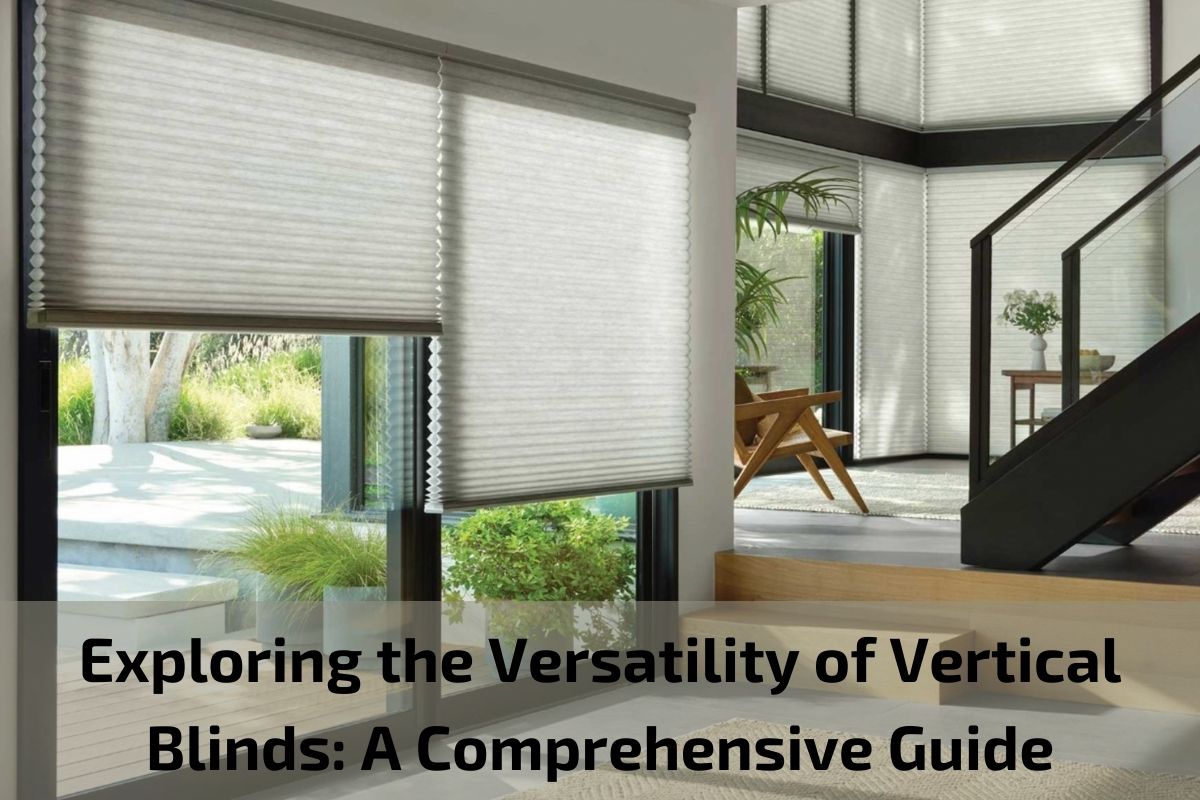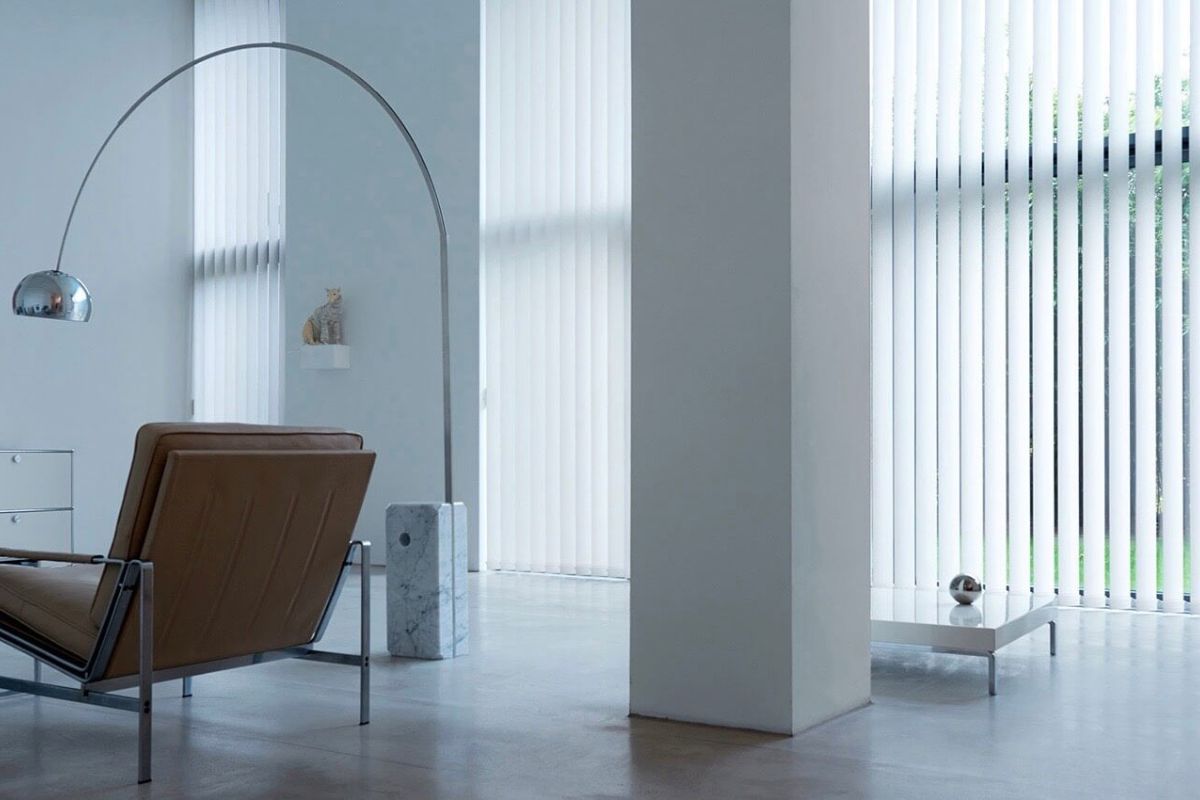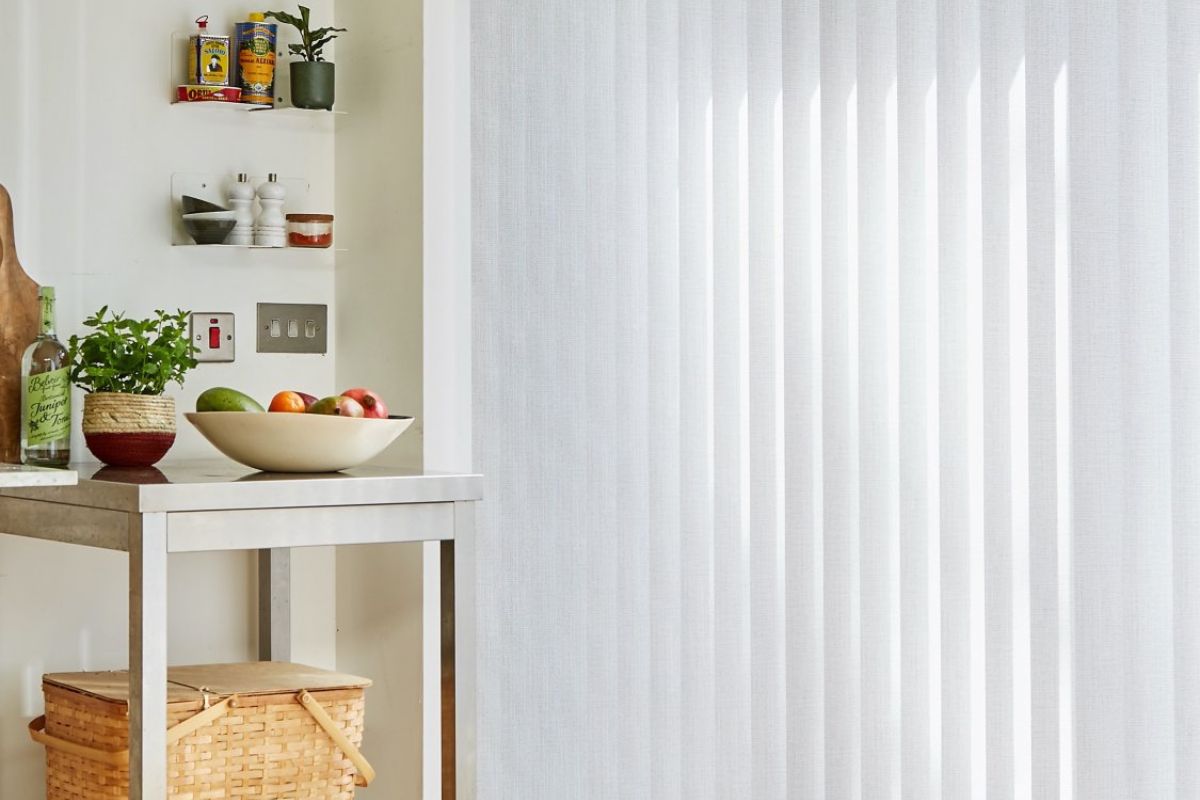Vertical blinds are a versatile and popular window treatment option that offers both style and functionality for any space. With their sleek design and customizable features, vertical blinds have become a staple in modern interior design, providing an elegant solution for light control, privacy, and aesthetic enhancement.
In this comprehensive guide, we will delve into the world of vertical blinds, exploring their versatility, functionality, and design options. Whether you’re looking to update the windows in your home, office, or commercial space, vertical blinds offer a range of benefits and customization possibilities to suit your needs and preferences.
From their definition and components to their advantages, installation techniques, and maintenance tips, this guide will provide you with everything you need to know about vertical blinds. We’ll also explore design inspirations and room-specific considerations to help you make informed decisions when selecting and styling vertical blinds for your space.
Importance of Exploring Vertical Blinds for Both Style and Functionality
Vertical blinds offer a unique blend of style and functionality that makes them a popular choice for window treatments in homes, offices, and commercial spaces. Understanding the importance of exploring vertical blinds goes beyond mere aesthetics; it encompasses the practical benefits they bring to any environment.
Enhanced Style: Vertical blinds contribute to the overall aesthetic appeal of a room. With a variety of materials, colors, and textures available, vertical blinds can complement any interior decor style, from modern and minimalist to traditional and classic. They add a touch of sophistication and polish to windows, creating a cohesive look throughout the space.
Optimal Light Control: One of the key advantages of vertical blinds is their ability to control natural light. By simply adjusting the angle of the slats, occupants can regulate the amount of sunlight entering the room. This feature not only allows for a comfortable ambiance but also helps protect furniture, flooring, and artwork from harmful UV rays.
Privacy Solutions: Vertical blinds offer excellent privacy control, making them ideal for bedrooms, bathrooms, and office spaces. When fully closed, the slats provide a barrier against prying eyes while still allowing for airflow and ventilation. This privacy feature enhances comfort and security, especially in urban or high-traffic areas.
Space Optimization: Unlike traditional curtains or drapes, vertical blinds take up minimal space and provide a streamlined window treatment solution. Their vertical orientation is particularly advantageous for large windows, sliding glass doors, and patio entrances, where horizontal blinds or curtains may be impractical or cumbersome.
Easy Maintenance: Vertical blinds are relatively easy to clean and maintain compared to other window treatments. Regular dusting or vacuuming of the slats helps keep them looking fresh and new, while occasional spot cleaning can address any stains or spills. This low-maintenance feature makes vertical blinds a practical choice for busy households and commercial settings.
Customizable Options: With a wide range of customization options available, including slat width, material choice, and operating mechanisms, vertical blinds can be tailored to suit specific preferences and requirements. Whether you prefer the warmth of wood, the sleekness of aluminum, or the durability of vinyl, there’s a vertical blind option to match your style and budget.
Definition and components of vertical blinds
Vertical blinds are window coverings consisting of vertical slats or vanes that hang from a track at the top of the window frame. These blinds are designed to be adjusted to control light, privacy, and airflow within a room. The components of vertical blinds include:
Vertical Slats or Vanes: The primary feature of vertical blinds, the slats or vanes, are typically made of fabric, vinyl, PVC, aluminum, or wood. These slats are attached to the headrail and can be rotated to open or close, allowing for customizable levels of light and privacy.
Headrail: The headrail is a horizontal component at the top of the blinds that houses the mechanism for opening, closing, and rotating the slats. It also serves as the mounting point for the vertical blind system.
Track or Rail: The track or rail is the mechanism that supports and guides the movement of the slats along the top of the window frame. It ensures smooth operation when opening or closing the blinds.
Control Mechanism: Vertical blinds can be operated using various control mechanisms, including a wand, chain, or cord. These mechanisms allow users to adjust the position and angle of the slats to control light and privacy levels.
Bottom Weights and Chains: At the bottom of each slat, there are typically weights or chains that help maintain tension and stability, ensuring that the slats hang evenly and smoothly.
Valance: A valance is an optional decorative piece that covers the headrail and adds a finished look to the top of the blinds. It can be coordinated with the decor of the room to enhance the overall aesthetic appeal of the window treatment.
Mounting Brackets: Mounting brackets are used to secure the headrail to the wall or window frame. They provide stability and support for the vertical blind system.
Tilt Mechanism: The tilt mechanism allows users to adjust the angle of the slats, opening them to let in more light or closing them to enhance privacy. It can be controlled manually or through a wand or chain mechanism.
Advantages and Disadvantages of Vertical Blinds
Vertical blinds offer several advantages and disadvantages, making them a versatile yet consideration-worthy option for window treatments. Understanding both the pros and cons can help you make an informed decision when choosing vertical blinds for your space.
Advantages:
Excellent Light Control: Vertical blinds allow for precise control over the amount of natural light entering a room. By adjusting the angle of the slats, occupants can easily regulate light levels to create the desired ambiance.
Enhanced Privacy: With their ability to fully close and block out light, vertical blinds offer superior privacy compared to other window treatments. This makes them ideal for bedrooms, bathrooms, and office spaces where privacy is a priority.
Versatility in Design: Vertical blinds come in a variety of materials, colors, and textures, allowing for customization to match any interior decor style. Whether you prefer sleek vinyl, elegant fabric, or natural wood, there’s a vertical blind option to suit your aesthetic preferences.
Space-Saving Solution: Vertical blinds are well-suited for large windows, sliding glass doors, and patio entrances, where space optimization is essential. Their vertical orientation allows them to stack neatly to the side when fully open, maximizing usable space.
Easy Maintenance: Vertical blinds are relatively easy to clean and maintain compared to other window treatments. Regular dusting or vacuuming of the slats helps keep them looking fresh and new, while occasional spot cleaning can address any stains or spills.
Disadvantages:
Potential for Noise and Drafts: In windy conditions or when windows are open, vertical blinds may sway or clatter, causing noise and allowing drafts to enter the room. This can be mitigated by choosing heavier materials or installing additional weather stripping.
Limited Insulation: Vertical blinds may offer less insulation compared to other window treatments, such as curtains or cellular shades. While they can help regulate light and privacy, they may not provide as much thermal insulation against heat or cold.
Complex Installation: Installing vertical blinds can be more complex than other window treatments, especially for large or irregularly shaped windows. Proper measurements, alignment, and mounting are crucial for ensuring smooth operation.
Potential for Wear and Tear: Over time, the mechanisms and components of vertical blinds, such as the tilt mechanism and slats, may experience wear and tear. This can result in issues with operation and may require maintenance or replacement of parts.
Choosing the Right Vertical Blinds
Selecting the perfect vertical blinds for your space involves considering various factors to ensure they meet your functional needs and aesthetic preferences. Here are key considerations to keep in mind when choosing vertical blinds:
Material: Vertical blinds are available in a range of materials, including fabric, vinyl, PVC, aluminum, and wood. Each material offers unique characteristics in terms of durability, light control, and visual appeal. Consider the specific requirements of your space and choose a material that aligns with your lifestyle and design preferences.
Color and Texture: The color and texture of the vertical blinds can significantly impact the overall look and feel of the room. Opt for colors and textures that complement your existing decor and furnishings. Neutral tones like white, beige, and gray offer versatility and timeless appeal, while bold colors or patterns can make a statement and add personality to the space.
Slat Width: Vertical blinds come in various slat widths, ranging from narrow to wide. The width of the slats can affect the amount of light and privacy they provide, as well as the overall aesthetic of the blinds. Consider the scale of your windows and the desired level of light control when choosing the slat width.
Operating Mechanism: Vertical blinds can be operated using different mechanisms, including a wand, chain, or cord. Determine which operating mechanism is most convenient and safe for your household or workspace. Cordless options offer enhanced safety, particularly in homes with children or pets.
Light Control: Consider the orientation of your windows and the amount of natural light entering the room throughout the day. Opt for vertical blinds with adjustable slats that allow you to control the direction and intensity of light. This feature is particularly important in rooms where glare or direct sunlight may be an issue.
Privacy Needs: Assess the privacy requirements of the space and choose vertical blinds that offer the desired level of privacy when closed. For bedrooms and bathrooms, consider blinds with opaque or blackout materials that block out light and prevent visibility from outside.
Customization Options: Explore customization options available for vertical blinds, such as valances, decorative trims, and motorization features. These additional features can enhance the functionality and visual appeal of the blinds while allowing you to tailor them to your specific needs and style preferences.
Installation Tips for Vertical Blinds
Installing vertical blinds requires careful planning and attention to detail to ensure proper fit and functionality. Follow these installation tips to successfully install your vertical blinds:
Gather Necessary Tools: Before starting the installation process, gather the necessary tools and materials, including a tape measure, level, pencil, screwdriver, and drill with appropriate drill bits. Having everything on hand will streamline the installation process.
Measurements: Accurate measurements are crucial for ensuring that your vertical blinds fit properly within the window frame or mounting surface. Measure the width and height of the window opening and record the dimensions carefully.
Mounting Surface: Determine the type of mounting surface where the vertical blinds will be installed. This could be inside the window frame, outside the frame, or on the ceiling above the window. Choose the appropriate mounting brackets and hardware based on the surface type.
Bracket Placement: Position the mounting brackets evenly along the top of the window frame or ceiling, ensuring that they are aligned and level. Use a pencil to mark the placement of the bracket screws before drilling pilot holes to prevent splitting the wood or damaging the surface.
Attach Brackets: Secure the mounting brackets to the designated locations using screws and a screwdriver or drill. Double-check the alignment and stability of the brackets to ensure they can support the weight of the vertical blinds.
Attach Headrail: Slide the headrail of the vertical blinds into the mounting brackets, making sure it fits securely and evenly. Depending on the type of headrail, you may need to engage a locking mechanism or secure screws to hold it in place.
Test Operation: Once the headrail is securely mounted, test the operation of the vertical blinds to ensure they open, close, and rotate smoothly. Make any necessary adjustments to the tilt mechanism or slat alignment as needed.
Install Valance or Fascia (Optional): If your vertical blinds come with a valance or fascia, follow the manufacturer’s instructions to install it securely over the headrail. This decorative element adds a finished look to the blinds and conceals the mounting hardware.
Final Adjustments: After installation, make any final adjustments to ensure that the vertical blinds are level, aligned, and function properly. Check for any gaps or unevenness and address them accordingly.
Safety Considerations: If your vertical blinds include cords or chains, ensure that they are properly secured and out of reach of children or pets to prevent accidents or entanglement.
Maintenance and Care of Vertical Blinds
Proper maintenance and care are essential for keeping your vertical blinds looking fresh, functioning smoothly, and lasting longer. Follow these tips to maintain and care for your vertical blinds:
Regular Dusting: Dust accumulation is inevitable, so it’s important to dust your vertical blinds regularly to prevent buildup. Use a soft cloth, duster, or vacuum cleaner with a brush attachment to gently remove dust from the slats. Start from the top and work your way down to ensure thorough cleaning.
Spot Cleaning: For stubborn stains or spots on the slats, spot cleaning may be necessary. Dampen a clean cloth with a mild detergent solution or a mixture of water and vinegar, then gently wipe the affected areas. Avoid using harsh chemicals or abrasive cleaners, as they may damage the material of the blinds.
Deep Cleaning: Periodically, give your vertical blinds a more thorough cleaning to remove dirt and grime that may have accumulated over time. Remove the blinds from the mounting brackets and soak them in a bathtub filled with warm water and mild detergent. Allow them to soak for a few hours, then rinse thoroughly with clean water and let them air dry completely before reinstalling.
Avoid Excessive Moisture: Excessive moisture can cause damage to the material of the vertical blinds, especially if they are made of fabric or wood. Avoid spraying water directly onto the blinds or allowing them to remain damp for extended periods. In humid environments, use a dehumidifier to reduce moisture levels and prevent mold or mildew growth.
Inspect for Damage: Regularly inspect your vertical blinds for any signs of damage, such as broken slats, loose brackets, or malfunctioning mechanisms. Address any issues promptly to prevent further damage and ensure the continued functionality of the blinds.
Lubricate Moving Parts: If the tilt mechanism or other moving parts of the vertical blinds become stiff or difficult to operate, apply a small amount of silicone-based lubricant to the affected areas. This will help lubricate the moving parts and restore smooth operation.
Protect from Sun Damage: Prolonged exposure to direct sunlight can cause fading and deterioration of the material of the vertical blinds. Consider installing UV-blocking window film or using curtains or drapes to protect the blinds from sun damage.
Professional Cleaning: For deep cleaning or maintenance tasks that require specialized equipment or expertise, consider hiring a professional cleaning service. Professional cleaners have the necessary tools and experience to clean and maintain vertical blinds effectively while minimizing the risk of damage.
conclusion
In conclusion, vertical blinds are versatile and practical window treatments that offer a wide range of benefits for both residential and commercial spaces. From their ability to control light and privacy to their customizable design options, vertical blinds provide an effective solution for enhancing the aesthetics and functionality of any room.
ABU DHABI SHOWROOM
Abu Dhabi Island, Al Salam Street
Behind Abu Dhabi Municipality and FAB bank
Heirs. Of Ibrahim G. Sultan Al Suwaidi Building
ONLINE FURNITURE – Showroom no. S2
Abu Dhabi,
Landline: 02 55 66 748
Phone : 056 600 9626, 0567 023 023, 02-67-21-444
DUBAI BRANCH
Risala Furniture LLC 9 24 A street, Al Quoz 1 Dubai – United Arab Emirates
Landline: 04-2959449
Phone: 056-600-9626




